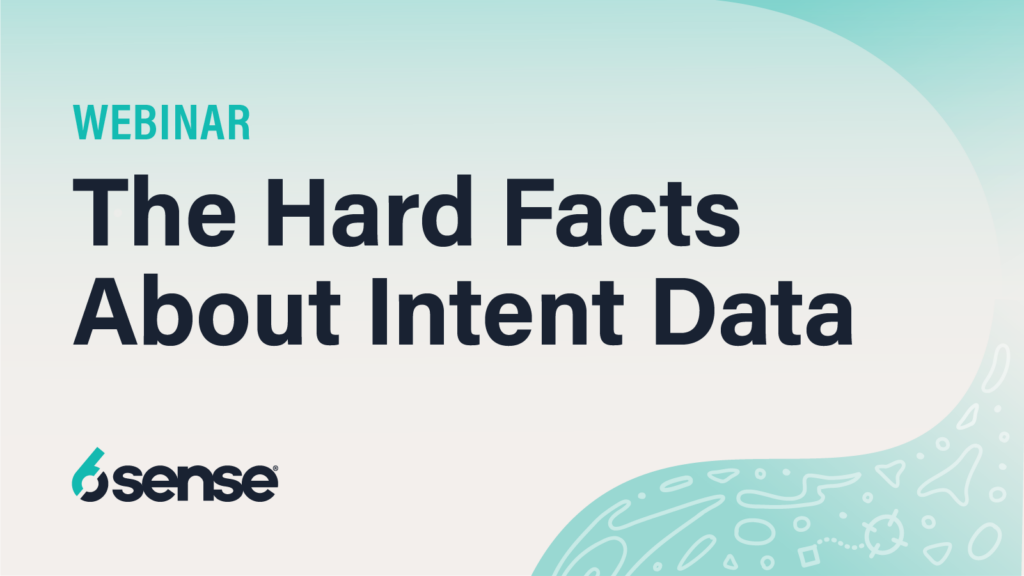Editor’s Note: CMO Coffee Talk is an open space for more than 1,200 CMOs to come together weekly with their peers and discuss timely, crowd-sourced topics. Matt Heinz of Heinz Marketing co-hosts these dynamic, illuminating conversations with 6sense CMO Latané Conant.
Our weekly live-streamed CMO Coffee Talk conversations always generate terrific questions and comments from our audience, and last week’s discussion on account-based management and measurement did not disappoint.
My biggest “a-ha” moment had to do more with a huge gap in account-based opportunity that many companies are missing entirely.
What Account-Based Is NOT
As a function or focus area, account-based marketing (ABM) has been interpreted — and misinterpreted — in so many ways.
I’ve heard CEOs tell their marketing leaders to “do ABM” to an account or for a rep. I’ve seen companies create direct mail campaigns and claim that “their ABM campaign is completed.” I’ve watched marketing teams create coordinated, account-focused multi-channel campaigns — and fail to include their sales teams at all.
None of these reach the bar of a true, integrated account-based go-to-market motion. In its purest form, an account-based motion means:
- A focus on key/qualified accounts
- A tightly coordinated approach across multiple members of the prospect’s “buying committee”
- An equally coordinated approach across the seller’s go-to-market teams
And in the vast majority of cases when this definition is followed successfully, it is still focused entirely on net-new business.
However, your greatest opportunity to use “ABM” to create maximum revenue impact at your organization might actually lie in extending customer relationships — including renewals, expansions and more.
Nail the ABM Fundamentals First
Whether you’re new to account-based motions or are ready to expand to impact customer lifetime value, the basics stay the same:
Define Your Most Important Target Accounts
This is a subset of your addressable market. Know the demographic, geographic and psychographic variables that make some accounts more attractive and valuable than others.
Know the Prospect’s Buying Committee
This includes decision-makers, executive sponsors, influencers, users, even detractors. Know what it takes to help them build consensus and confidence along the buying journey.
Know the Right Buying Journey Touchpoints
This includes not just the right message at the right time, but also knowing the right channel and/or team to execute it. This should be done in a seamless, coordinated way so that the audience sees your brand as a cohesive unit, not disjointed channels or teams.
Focus on Accounts, Communicate to Individuals
The logo isn’t going to answer your phone call, and the building isn’t going to sign a check. You’re targeting accounts, but are still talking to individuals. I don’t really care if you (or your CRM) call them contacts or leads … people are people.
Introducing Account-Based Retention
So what happens after the deal is closed? You celebrate, ring the bell, someone gets a commission check – and that prospect is handed over to a customer success team. What happens to your account-based motion now? Shouldn’t it continue?
Account-based retention (please, please let’s not acronym this one, too) can include everything from “land and expand” to driving formal renewals to simply ensuring your customers stay with you.
Some considerations when transitioning to an account-based retention motion:
Does the Buying Committee Change?
There may be different people involved in execution and usage than were involved in the purchase. Who is directly and indirectly benefiting from your product or service – internally and externally? How are you defining, measuring and communicating ongoing value to these people individually and as a group? Consensus doesn’t end with the (first) purchase.
Who Else Needs to See Confirmation of Delivered Value?
Just as you define a buying journey that anticipates key stages of decision-making and confidence-building during the initial purchase process, you should equally map a detailed path for account-based adoption, usage and validation. Where (and from whom) might the product’s ROI be evaluated or questioned down the road? Wait for the active “renewal” period at your own peril.
Do Key Buying/Renewal Committee Members Change?
Over the course of your relationship with the account, surely key internal AND external members will move on. Never forget that a key component of account-based success is rapport and relationship building. When new players take on key roles, what is your proactive strategy to engage and ensure continued momentum and value?
Coming Up on CMO Coffee Talk…
In our next CMO Coffee Talk meetup (which is just around the corner!), we’ll deep-dive into brand management and measurement.
How should early and late growth-phase companies think differently about brand strategies and investments? What are key markers of healthy brands in growth and scale-phase companies? Find out soon!
Join Our Thriving Community!
If you’re a B2B CMO or head of marketing and want access to a community of your peers (1,200 strong and growing) as well as numerous specific ABM-related resources, benchmark reports, tactical examples and more, we welcome you! Click here to apply for membership.







